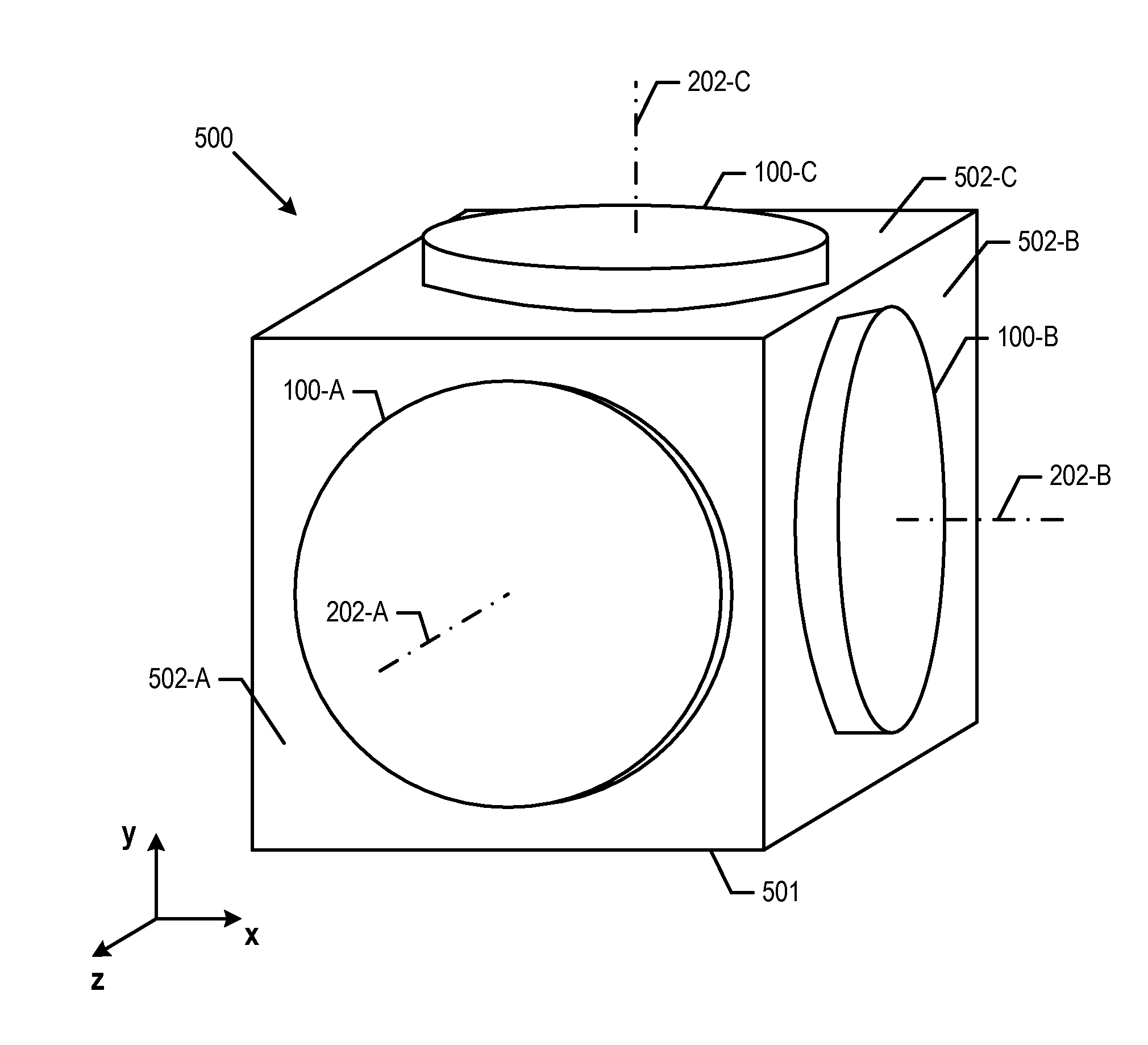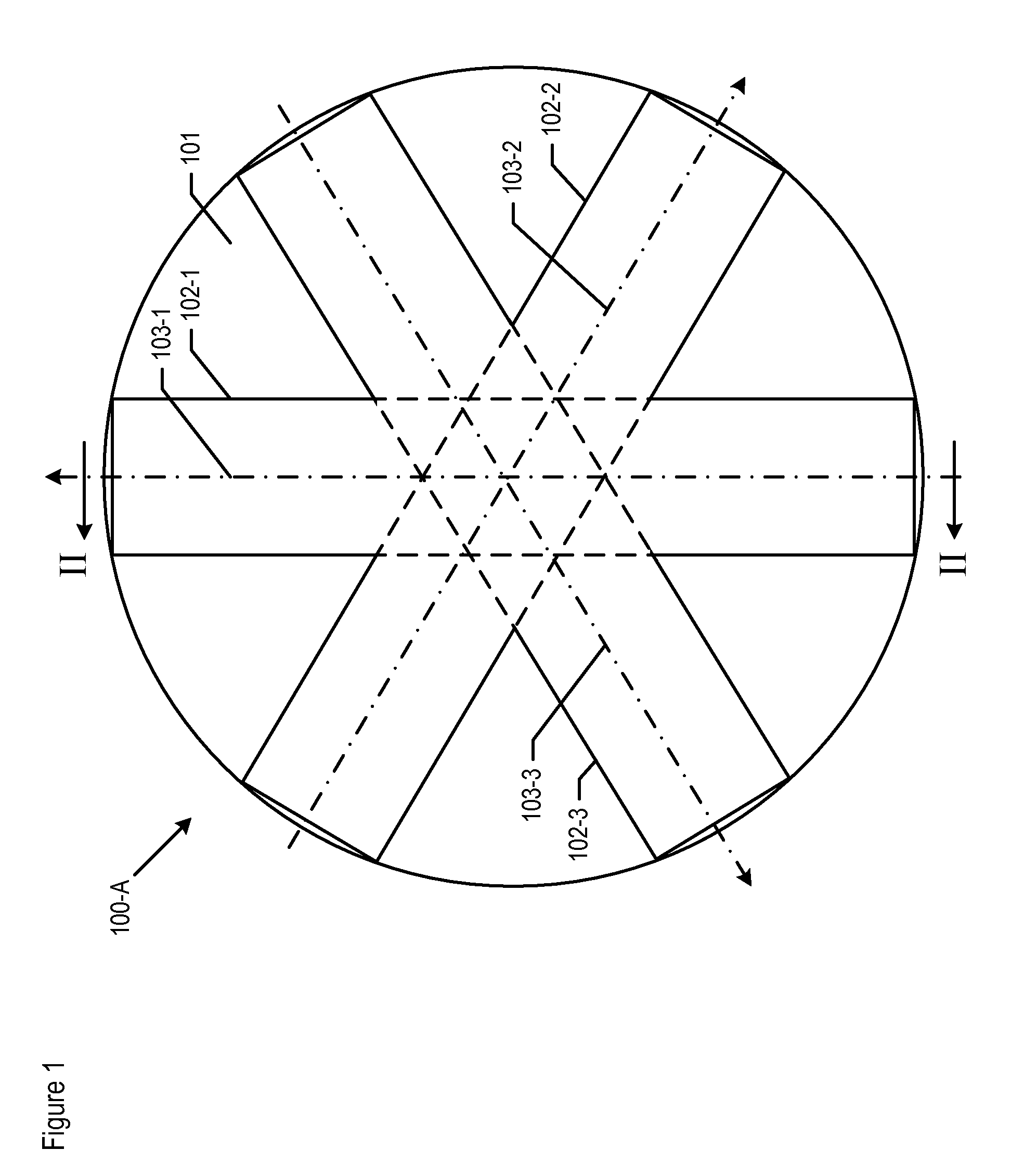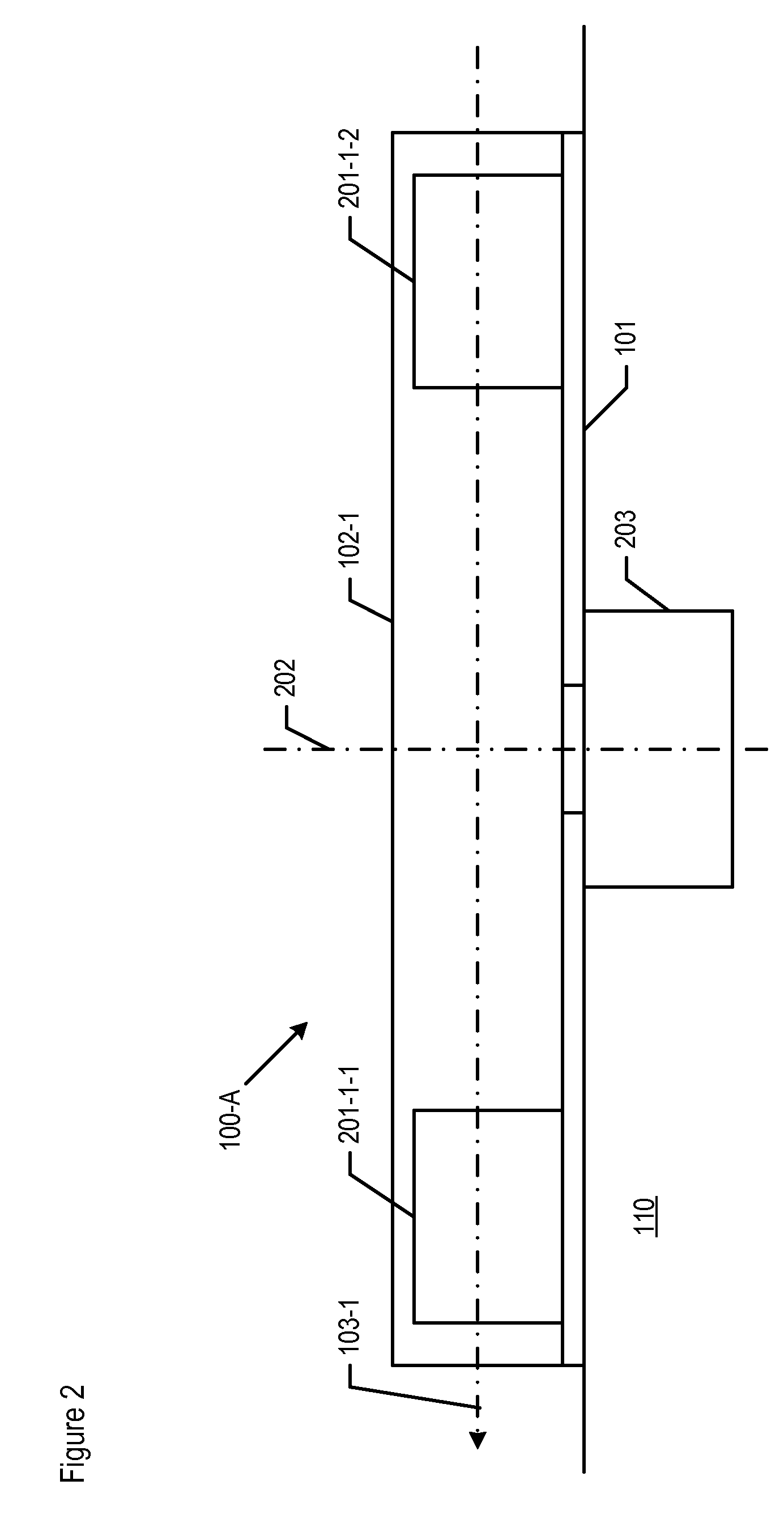Atom-interferometric, stepped gravity gradient measuring system
a gravity gradient and gradiometer technology, applied in the field of gravity gradiometers, can solve the problems of lack of portability and rapidity, low failure rate, and low failure rate of gradiometers, and achieve the effects of improving the accuracy of gradient measurements, reducing cost and maintenance, and high signal-to-noise ratio
- Summary
- Abstract
- Description
- Claims
- Application Information
AI Technical Summary
Benefits of technology
Problems solved by technology
Method used
Image
Examples
Embodiment Construction
[0022]FIG. 1 depicts a top-plan view of gravity gradiometer 100-A, in accordance with the illustrative embodiment of the present invention. Gradiometers 100-A comprises base 101, which is an object to which multiple accelerometer pairs are attached. Although for purposes of clarity base 101 is depicted as a disc-shaped plate, the base can be shaped differently than depicted, as those who are skilled in the art will appreciate.
[0023]Gradiometer 100-A further comprises accelerometer pairs 102-1, 102-2, and 102-3 mounted upon base 101. Accelerometer pairs 102-1 through 102-3 are described in detail below and with respect to FIGS. 2 through 4. As shown in FIG. 1, each accelerometer pair 102-1 through 102-3 is capable of measuring a gravity gradient along measuring axis 103-1 through 103-3, respectively. Measuring axes 103-1 through 103-3 are oriented such that the measuring directions are spaced 120 degrees apart from one another.
[0024]Three accelerometer pairs are depicted in FIG. 1, i...
PUM
 Login to View More
Login to View More Abstract
Description
Claims
Application Information
 Login to View More
Login to View More - R&D
- Intellectual Property
- Life Sciences
- Materials
- Tech Scout
- Unparalleled Data Quality
- Higher Quality Content
- 60% Fewer Hallucinations
Browse by: Latest US Patents, China's latest patents, Technical Efficacy Thesaurus, Application Domain, Technology Topic, Popular Technical Reports.
© 2025 PatSnap. All rights reserved.Legal|Privacy policy|Modern Slavery Act Transparency Statement|Sitemap|About US| Contact US: help@patsnap.com



